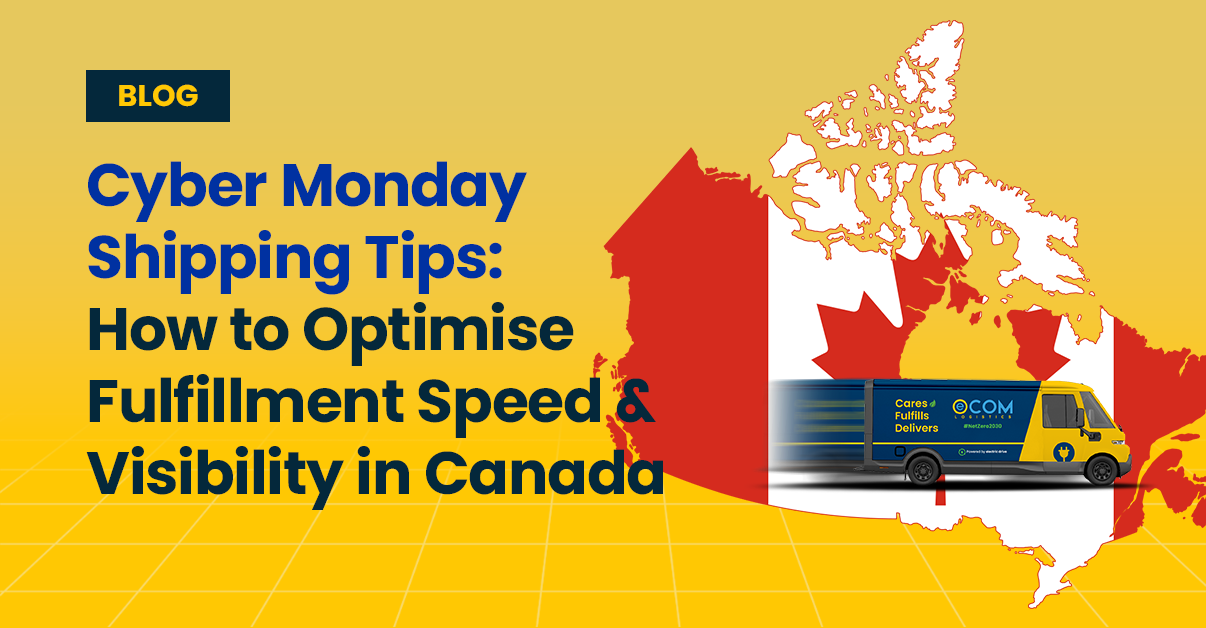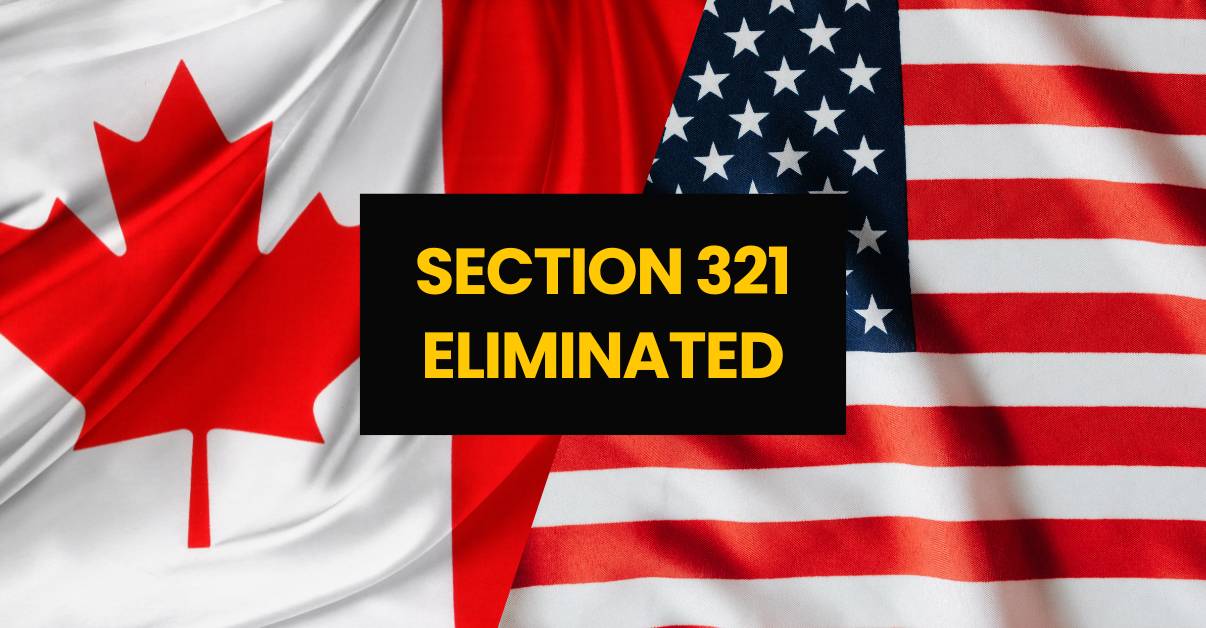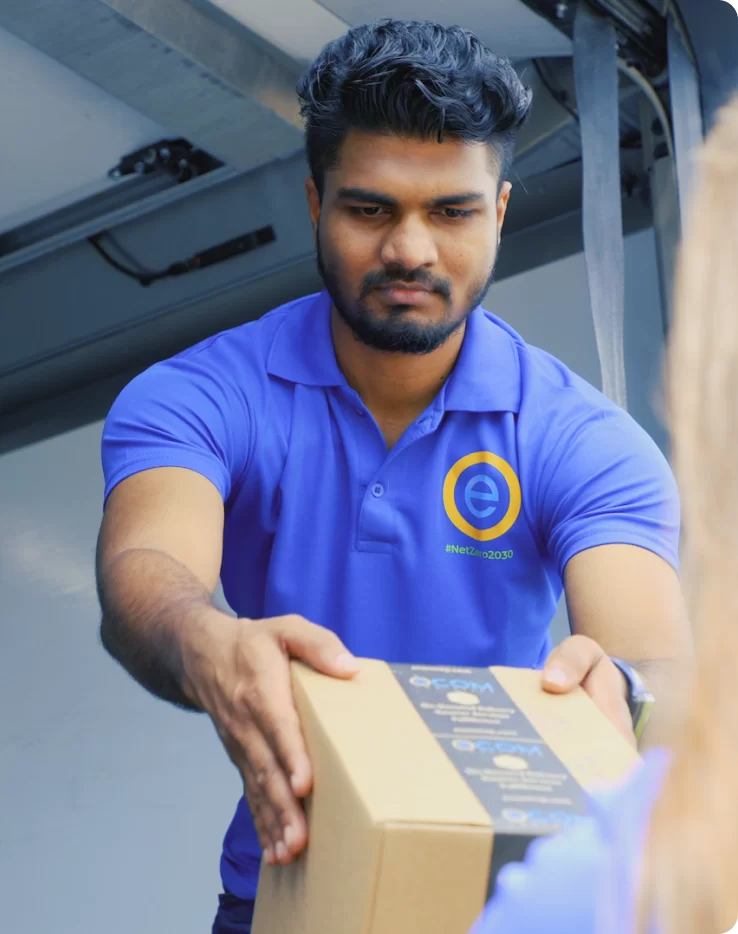Do you think you know your Canadian customers? Think again.
E-commerce in Canada isn’t just growing—it’s reshaping how people buy and what they expect from the brands they trust. In the last few years, online retail has picked up serious speed. The e-commerce market is projected to hit CA$103.21 billion in 2025, with steady momentum expected in the years ahead. By 2029, that number can climb to CA$144.87 billion, thanks to an impressive 8.84% annual growth rate.
With nearly 78% of Canadians projected to shop online in 2025, e-commerce continues to be a dominant force in the retail landscape. That’s a big shift—and it’s not just about numbers. It’s about changing behaviours, evolving expectations, and a digital shopping experience that’s becoming more personal, more convenient, and more value-driven.
For businesses, that means one thing: keeping up with what Canadian consumers actually want isn’t optional—it’s essential. What are they prioritizing right now? How do they like to pay? Are they really as eco-conscious as they say?
Let’s unpack the trends, preferences, and behaviours shaping Canadian e-commerce in 2025—and explore what it takes to keep your business one step ahead.
The Canadian e-commerce landscape: What’s going on?
Canada’s e-commerce scene has come a long way—and it’s not slowing down anytime soon. Just a few years ago, online shopping made up a small slice of retail sales. Fast forward to now, and it’s sitting at around 12% of all retail activity. In dollar terms? We’re talking CA$81.1 billion in 2024.
And it’s not just about retail anymore. From travel and food delivery to entertainment, digital transactions are now woven into nearly every aspect of consumer life. The momentum is strong—and it’s reshaping the future of how Canadians buy.
What are Canadians buying online?
When it comes to online shopping habits, fashion takes the lead. By the end of 2024, almost half of Canadians had bought clothing online. Shoes and cosmetics are also up there, with 29% and 25% of people shopping in those categories, respectively. Electronics, books, and home goods continue to perform well, too.
Grocery delivery? Still growing. Canadians were a little slower to adopt it than some other countries, but since the pandemic, it’s picking up pace—especially as the service gets faster and more convenient.
One interesting insight: Canadians love to shop local. While global giants like Amazon still lead the pack, homegrown brands like Canadian Tire and Indigo are holding their own—especially in niche markets.
Mobile commerce in Canada
Mobile commerce is quickly becoming the norm in Canada, now making up about 40% of all online transactions. Shoppers are browsing deals and making purchases right from their phones—anytime, anywhere. In fact, some retailers say their mobile traffic has even surpassed desktop.
But here’s the catch: while mobile is convenient, shoppers tend to spend less per transaction, and conversion rates can be lower. That’s why having a smooth, user-friendly mobile experience isn’t just a bonus—it’s essential.
The role of social commerce
Social commerce is picking up speed in Canada. Platforms like Instagram and Facebook aren’t just for scrolling anymore—they’re actually shaping what people buy. Almost half of Canadians (47%) have made a purchase through social media at some point in 2024, with men slightly more likely to hit that “buy now” button.
That said, most people still don’t start their shopping journey on social media. Only 13% begin there, and just 8% complete purchases directly on the platforms. So while more shoppers are open to buying through social media, it’s still in its early days. The interest is there—brands just need to make the experience smoother and build a little more trust to really see it take off.
So, what’s the big picture?
Canadians are digitally savvy—but they still appreciate a good, clean online storefront. The brands that are winning right now? They’re the ones creating seamless shopping experiences across every channel—website, app, social media, and even in-store.
It’s not about being everywhere. It’s about showing up consistently and conveniently—wherever your customers are.
Key insights into Canadian e-commerce consumers
If you’re selling online in Canada, understanding what shoppers actually care about can make all the difference. Sure, trends come and go—but when it comes to the online shopping experience, some things are non-negotiable. Canadians want it fast, they want it simple, and they don’t want surprises at checkout.
Here’s what you need to know to keep them happy—and coming back.
What Canadian shoppers really want when they shop online
1. Speed matters—But so does choice
Let’s start with shipping, because it’s a big one. Canadians have gotten used to fast delivery thanks to services like Amazon Prime. That’s the new standard. So, when shipping takes too long, it’s a deal-breaker—almost 1 in 4 shoppers abandon their cart if the delivery window doesn’t cut it.
But here’s the twist: they don’t want to pay more for that speed. The solution? Give them options. Some shoppers are happy to wait a little longer if it means saving a few bucks—more than half say they’ll wait over a week for delivery if it’s cheaper. Offer both express and economy shipping, and let them choose what works for them.
2. Keep pricing clear and upfront
One of the fastest ways to lose a Canadian shopper? Hit them with unexpected fees at checkout. That last-minute “handling fee” or surprise duty charge? Yeah, that’s a no.
Canadians appreciate transparency. They want to know exactly what they’re paying from the start. So, be upfront about costs, especially when it comes to shipping and cross-border fees. The clearer your pricing, the more likely they are to stick around and hit “Buy.”
3. Tracking = Trust
Once they place an order, they want to know where it is. Around 81% of shoppers actively track their packages. Little updates like “Your package is out for delivery” or “It’s been delivered” go a long way in building trust and managing expectations. Don’t leave them in the dark—real-time updates are now part of the online shopping experience.
How Canadians prefer to pay online
When it comes to paying online, Canadians like what they know—but they’re also open to trying new things, as long as it feels secure and convenient. If you’re looking to optimize your checkout, offering a range of trusted payment options is the way to go.
1. Credit cards still rule
Credit cards are still the go-to for most Canadian shoppers, especially those in older age groups. Visa, MasterCard, and Amex dominate, accounting for about 78% of e-commerce spending. They offer strong consumer protections, rewards programs, and a sense of familiarity that builds confidence when shopping online. If you’re only offering one or two payment methods, this is the first to lock in.
2. PayPal: The trusted alternative
Used for around 20% of online purchases, PayPal remains a strong second. It’s fast, secure, and doesn’t require shoppers to re-enter their card details each time. For many, PayPal serves as a “safe middleman” between their bank and unfamiliar retailers—especially when shopping from smaller or newer e-commerce brands. It’s a simple way to build instant trust.
3. Digital wallets are gaining ground
Apple Pay and Google Pay are catching on fast—especially among younger shoppers. A survey conducted in 2024 showed that nearly 70% of Gen Z Canadians have made digital wallets part of their daily routine.
These wallets speed up the checkout process, particularly on mobile devices. With just a tap or facial recognition, the transaction is done—no need to grab a wallet or type in anything. Convenience = conversion.
4. Buy Now, Pay Later (BNPL) is on the rise
Nearly 1 in 3 adults use a Buy Now, Pay Later (BNPL) service for their online purchase. Tools like Afterpay, Klarna, and PayBright are especially popular for mid-range items like tech and fashion.
Offering BNPL gives customers more financial flexibility, which often leads to larger carts and fewer abandoned checkouts. It’s also a big draw during peak retail seasons like holidays or back-to-school.
Why sustainability matters more than ever
Sustainability is a real factor in how Canadians choose what to buy, who to buy it from, and whether they come back. More shoppers are looking at the bigger picture: how a product is made, how it’s packaged, how it gets to them, and how it aligns with their values.
If you’re not already thinking about how your brand shows up on the sustainability front, now’s the time.
1. Packaging speaks volumes
Let’s start with packaging—because it’s one of the first things customers see when their order arrives. Plastic is a major turnoff. Over 90% of Canadians are concerned about its environmental impact. Shoppers prefer packaging that’s recyclable, compostable, or minimal—and they notice the difference.
Even small touches, like printing “Made from 100% recycled materials” on your box, can leave a positive impression. On the other hand, excess packaging or oversized boxes can spark frustration and even negative reviews. Sustainable packaging isn’t just better for the planet—it’s good for your brand.
2. Greener shipping = Brand loyalty
Shipping doesn’t just get products from A to B—it tells a story.
More Canadians are aware that shipping has a carbon footprint, and about two-thirds say they’d pay up to 5% more for greener delivery options. That could mean offering carbon-neutral shipping, using electric delivery vehicles, or even promoting local pickup points.
Eco-conscious shipping choices aren’t just nice-to-haves—they’re real differentiators that can help you stand out in a crowded market.
3. It’s also about ethics
It’s not just about what you ship or how—it’s about who you are as a company.
Canadian shoppers—especially millennials and Gen Z—are paying attention to the values behind the brand. They want to see fair labour practices, sustainable materials, and a commitment to doing better. If you’re certified (like Fair Trade, B Corp, or organic), or working toward a sustainability goal, talk about it.
And even if you’re not there yet? Be honest about your journey. Transparency builds trust—sometimes even more than perfection.
4. Shoppers are willing to pay more (when it feels worth it)
Here’s the good news: Canadians aren’t just saying they care about sustainability—they’re backing it up with their wallets.
On average, shoppers are willing to spend about 6.9% more on sustainable products. And 1 in 5 are open to paying at least 10% more. Of course, not everyone can afford to do that every time—but there’s a strong, growing segment of values-driven consumers who will.
If you’re making eco-conscious choices, don’t be shy about showcasing them. Just make sure your message matches your actions.
At the end of the day, Canadian shoppers want things to be simple, flexible, and meaningful. Fast shipping, easy returns, clear pricing, and eco-conscious practices all play a part—but it’s really about showing that you get them.
You don’t need to be perfect—just thoughtful.
Strategies for e-commerce businesses to meet consumer expectations
So, what can e-commerce businesses actually do to keep Canadian shoppers happy—and coming back? Let’s break it down into a few key areas:
A. Make shipping & fulfillment work for your customers
Let’s be real—delivery makes or breaks the online shopping experience. Nearly half of shoppers drop off when they see high shipping fees, and a good chunk leave because delivery takes too long.
Here’s what you can do:
- Give people choices: Some customers want it now (same-day or next-day), others just want it cheap. Offer both fast and budget-friendly options, and make sure they’re clearly displayed before checkout—no one likes surprise fees.
- Think about where your inventory lives: If you’re shipping everything from one place—say, Toronto—it’s going to take a while (and cost more) to get that package to someone in Vancouver. Hence, it’s better to work with a 3PL like Ecom Logistics that has warehouses in major locations in Canada so that you can get stuff to customers faster and cheaper.
- Use data to stay ahead: If you know winter coats start flying off the shelves in Alberta every October, stock up your closest fulfillment center early. You don’t need to be a big retailer with fancy tools—most e-commerce platforms give you enough data to work with.
- Don’t forget the last mile: Partner with the right carrier who can deliver fast—same-day if possible—and give your customers real-time tracking they can actually rely on. You can also opt for regional carriers like Ecom Express who provide flat-rate shipping and also same-day delivery options for faster delivery at lower rates. People want updates, whether it’s by email or text, and they want to know their package is safe. Since package theft is a real concern in Canada, offering low-cost insurance or just having a clear support policy can make all the difference.
- Speed up your processes: Whether you’re managing fulfillment yourself or working with a partner, aim to get orders picked, packed, and ready to go the same day they come in. Fast fulfillment keeps things moving, helps your delivery partners do their job better, and most importantly—it meets the expectations of today’s always-on shoppers.
Bottom line: Fast, transparent, and flexible shipping = fewer abandoned carts and happier shoppers. You spent all that effort getting someone to hit “Buy”—don’t lose them over delivery hiccups.
B. Create a shopping experience people actually enjoy
With so many online stores just a click away, your website needs to do more than just work—it should feel intuitive, personal, and even a little delightful. The way your site looks, functions, and responds can be the difference between a quick bounce and a loyal customer.
Here’s what can make a real impact:
Here’s what helps:
- Show them what they want: Use smart tools like AI to recommend products based on a customer’s past purchases or what they left in their cart. Shoppers love when a site feels like it knows them. Even highlighting what’s trending in their area or seasonally popular can turn a scroll into a sale.
- Be available (even when you’re not): Chatbots are great for answering quick questions 24/7—like “Where’s my order?” or “Do you have this in stock?” They help customers feel heard, even outside business hours. And when they’re done right, people actually prefer them to waiting on hold or digging through FAQs.
- Keep it smooth across all devices: Today’s shopping journey isn’t linear. A customer might discover you on Instagram, research on desktop, and check out later on their phone. A seamless experience across devices—where carts, logins, and preferences follow them—makes your brand feel polished and trustworthy.
- Get personal with loyalty and emails: Loyalty programs work even better when they feel personal. Combine rewards with tailored offers based on browsing or purchase history. Just be sure to keep things friendly, CASL-compliant, and make unsubscribing just as easy as opting in. Respect earns attention.
In short: Great customer experience is about more than features—it’s about how your brand feels to shop with. Be helpful, be thoughtful, and make every click count.
C. Build trust—and keep it
If you want people to buy from you (and keep coming back), trust is non-negotiable. In e-commerce, where shoppers can’t touch or try the product, your brand has to do the heavy lifting. Every interaction is a chance to either build—or break—that trust.
Here’s how to make it count:
- Be upfront: Make your return policies, shipping timelines, and any extra fees easy to find and easy to understand. If customers have to dig for the fine print, they’ll assume you’re hiding something. Clarity creates confidence. When people know what to expect, they’re more likely to follow through with a purchase—and recommend you to others.
- Show reviews—yes, even the not-so-perfect ones: Honest customer feedback builds credibility. Seeing a mix of reviews (not just five stars) makes your brand feel real and trustworthy. And how do you respond to negative feedback? That’s your moment to shine. A thoughtful reply can turn a bad experience into a loyal customer.
- Keep data safe: Trust also means protecting your customers’ personal info. Use secure payment gateways, SSL encryption, and write your privacy policy in plain language. If you’re collecting data for personalization, be transparent. Let customers know how you’re using it—and give them the option to opt out.
- Be human: People remember good customer service. Whether it’s email, phone, or live chat with a real person, make sure your support is easy to access and quick to respond. A helpful interaction can turn frustration into loyalty—especially when it’s fast and friendly.
In short: Trust doesn’t come from big promises—it comes from clear communication, honesty, and showing that you care. And once you’ve earned it? Keep showing up in ways that reinforce it.
D. Make it local
Canada isn’t just big—it’s incredibly diverse. From coast to coast, shoppers speak different languages, experience different climates, and celebrate different holidays. So, if you want your brand to really connect, tapping into those local details makes all the difference.
Here’s how to show you’re not just shipping to Canada—you’re part of it:
- Go bilingual where it counts: If you’re selling in Quebec (or anywhere in French-speaking Canada), offering French content and support isn’t just helpful—it’s often required by law. Even simple touches like bilingual product pages or checkout options show respect and make your store more accessible. It’s not just about compliance—it’s about inclusion.
- Run regional campaigns: Did you know Boxing Day is sometimes bigger than Black Friday in Canada? Or that Thanksgiving happens in October, not November? Whether it’s seasonal promotions or product relevance (hello snow boots in Montreal, rain jackets in Vancouver), tailoring your offers by region shows you’re in tune with your audience—not just pushing a generic calendar.
- Partner with local influencers: You don’t need celebrity endorsements to win over Canadian shoppers. Micro-influencers who understand their communities can be much more impactful. When they speak the local language, slang, or culture, they feel more authentic—and that authenticity builds trust. Think regional pride meets real connection.
- Use Canadian terms: Small details matter. Use CAD for pricing, metric measurements, and Canadian spellings (like “colour” and “centre”) to make your brand feel native, not imported. It shows shoppers you’ve taken the time to localize, rather than just copy-paste a U.S. guidebook
- Shout out to your local customers: Whether it’s sharing testimonials from customers in different provinces or sponsoring a community event, those local touches go a long way. They show that you’re listening, engaged, and invested in more than just sales—you’re part of the community.
Bottom line: When you speak to Canadians in a way that reflects where they actually live, you build stronger connections. It’s about more than marketing—it’s about belonging.
Where do you go from here?
Canadians know what they want—and they’re not afraid to move on if a brand doesn’t deliver. From fast shipping and simple returns to ethical practices and thoughtful localization, the bar keeps rising.
But here’s the good news: with the right mindset and the right strategies, you don’t just keep up—you stand out. Focus on what really matters to your customers. Meet them where they are. Show them you’re paying attention.
Because when you lead with care, clarity, and consistency, you’re not just making sales—you’re building loyalty.
How can we help
If all of this feels like a lot to manage—don’t worry. You don’t have to do it alone.
We’re Ecom Logistics—a 3PL partner made for e-commerce brands that want to grow without getting bogged down in logistics. Whether you’re just getting started or shipping thousands of orders a day, we help make things run smoother behind the scenes so you can focus on what matters most: your products and your customers.
Here’s what we bring to the table:
- Seamless, end-to-end fulfillment: From warehousing and inventory to picking, packing, and shipping—we handle it all. Our trusted carrier network ensures your orders reach customers on time, without the stress.
- Fast, reliable last-mile delivery: Need to ship fast? We offer same-day and next-day delivery in major Canadian cities, complete with real-time tracking and an EV fleet for a greener footprint.
- Sustainability built in: We’re committed to #NetZero2030—with sustainable packaging, electric vehicles, and efficient operations that help reduce your carbon impact while keeping customers happy.
- Smart tech that keeps you in control: Our WMS and tech integrations give you live updates on everything from inventory to delivery, so you can manage your store with confidence and transparency.
- Flexible, scalable solutions: Big campaign? Seasonal spike? Sudden growth? We scale with you—without sacrificing speed, cost, or quality.
- A team that feels like part of yours: We’re more than a 3PL—we’re a partner. Our team is here to help you grow smarter, move faster, and deliver the kind of experience that keeps your customers coming back.
Ready to make your logistics work as hard as you do?
Let’s build something great together. Contact us to learn more on how we can support your next stage of growth.
Frequently asked questions
1. What’s the cheapest way to offer fast shipping in Canada?
Canadian consumers are prioritizing fast, affordable delivery, mobile-friendly shopping, and sustainable practices. Social commerce is also growing, especially among Gen Z and millennials. But even with these shifts, trust, clear pricing, and local relevance still carry a lot of weight. The most successful brands are those that deliver on both speed and substance—while staying tuned into regional preferences.
2. How can I reduce cart abandonment in my Canadian online store?
The top reasons for cart abandonment in Canada are slow or expensive shipping, surprise fees at checkout, and clunky mobile experiences. To lower drop-offs, offer flexible shipping options, show all costs upfront, and make sure your site works smoothly across all devices. Real-time tracking and a fast checkout process also help build trust and boost conversions.
3. Are Canadian shoppers really willing to pay more for sustainability?
Yes—especially if it aligns with their values and feels genuine. Shoppers are more likely to support brands that show real efforts, like using recycled packaging or offering low-emission shipping. It’s not just about making claims; transparency about your sustainability journey makes a real difference.
4. What payment methods do Canadian consumers prefer for online shopping?
Credit cards are still the top choice, but PayPal, Apple Pay, and Google Pay are gaining popularity, especially on mobile. Buy Now, Pay Later (BNPL) is also catching on fast, particularly for fashion and electronics. Offering a mix of familiar and flexible payment options can help boost trust and reduce friction at checkout.
5. What’s the best way to localize my ecommerce store in Canada?
Start by using Canadian spelling, showing prices in CAD, and offering bilingual content—especially for Quebec. Tailor promotions to local holidays and seasons, and consider regional inventory if you can. Highlighting Canadian reviews or partnering with local influencers can also build authenticity and help your store feel more relatable to shoppers across the country.




